Spoiler alert: pneumatic desks are the greener option.
Pneumatic desks are not only “greener” by the basic measures. They are also faster, quieter, and easier to use. Let’s take a look.

Electric desks have a short “useful life”
Electric height-adjustable desks are notorious for breaking down — their motors burn out and their electrical wires break. Voltage issues can also cause the desk to simply stop working. What’s more, their wiring introduces the possibility that your next coffee spill will cause an electrical fire. All of these risks and issues shorten their lifespan, not to mention their dependability.
- Motor burnout = no more “up” and “down”
- Voltage issues and wiring breaks = electrical failure
- Your next coffee spill could cause an electrical fire

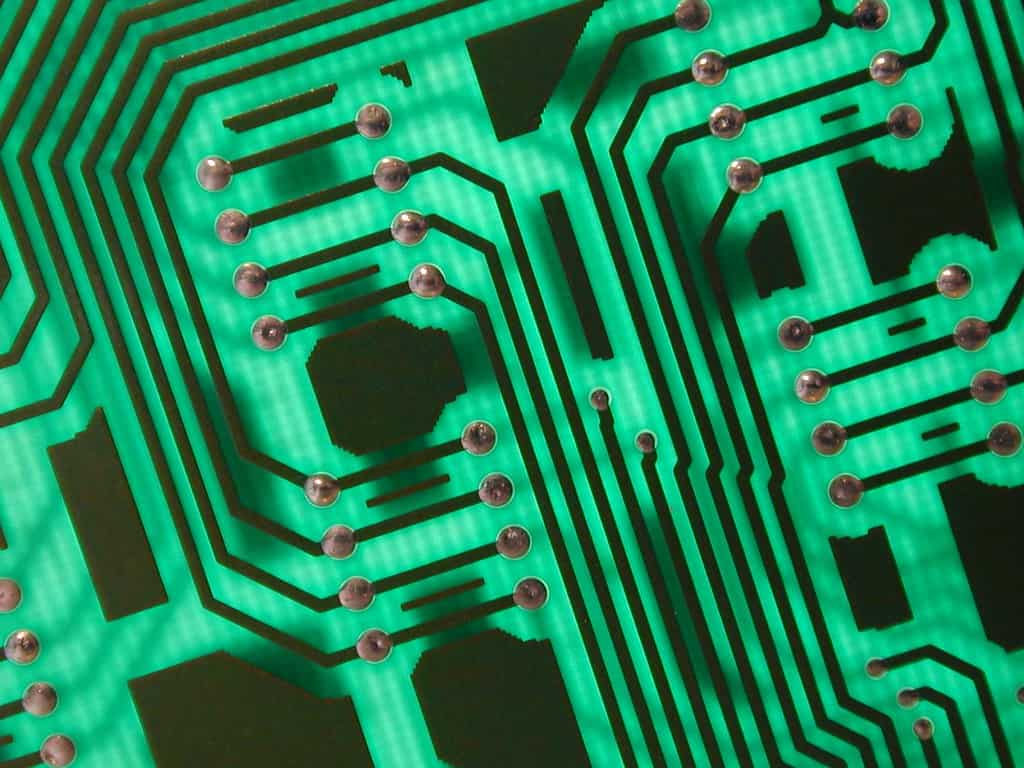
Electric desks leave behind E-waste & pollutants at the end of life.
E-waste is electronic waste that is non-recyclable — waste that, therefore, winds up in the landfill. We make a lot of it in the U.S. And a lot of E-waste is a big problem because electronic waste contains toxins like lead, mercury, arsenic, cadmium, chlorine, and bromine. In fact, E-waste represents only 2% of landfills in America, yet it is to blame for 70% of toxic waste overall.
Electric sit-stand desks contribute to the mounting E-waste problem because their motors are made with multiple electronic components that leak pollutants after they’re thrown away. Circuit boards, for instance, leak tin-lead solder. And PVC within their power cords leaks dangerous chemicals like dioxins, phthalates, vinyl chloride, and more.
So not only might the thing break down in a year or two because the motor burns out, but you won’t even be able to recycle the desk’s most polluting components. The control boxes and wiring harnesses within an electric desk are also hard to disassemble, making it difficult to recycle even the recyclable components within them.
- Electric motors, control boxes, and wiring harnesses within an electric desk make the desk difficult to disassemble and recycle — recyclable components wind up in the landfill
- Lead within electric motor circuit boards leaches into groundwater
- PVC within electric desk power cords contains a laundry list of dangerous chemicals

→ While an electric desk is powered by an electric motor, a pneumatic desk is powered by air. And air, as we all know, is non-polluting and produces no waste
Electric desks draw power 24/7
The U.S. Department of Energy reports that 6-10% of electricity in the average home is consumed by products that are turned off. This is because appliances and electrical devices draw electricity for their standby mode. Some people call it vampire power. Other terms include ‘vampire draw,’ ‘ghost load,’ ‘phantom load,’ ‘standby power,’ or ‘leaking electricity.’ In sit-stand desk terms, vampire power is the 24/7 power drain of your electric desk ‘sitting ready’ to adjust at all times.
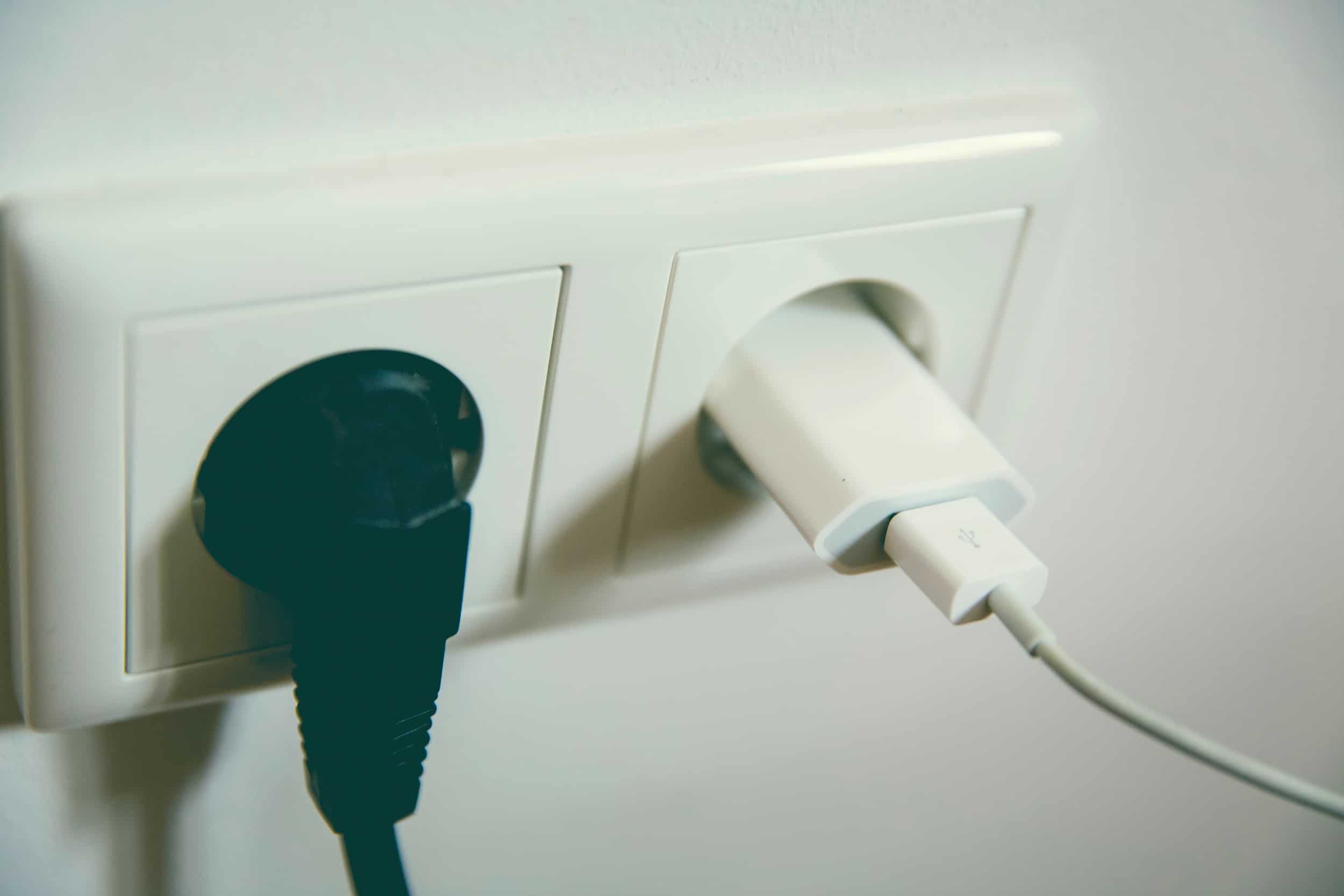
Vampire power runs up your electric bill. It also produces more heat for your AC unit to overcome. 1 watt of power produces about 3.4 BTUs of heat per hour. It simply doesn’t make sense for the desk to be plugged in all day, drawing power and producing heat if you only transition it 10 times a day (a transition that takes seconds).
→ Again, while an electric desk sucks electricity all day, a pneumatic desk is powered by air — and air is a free, renewable resource
The alternative to an electric: a pneumatic sit-stand desk
So your typical electric desk doesn’t last long, leaves behind toxic waste, and sucks energy constantly… What about its contender, the pneumatic height-adjustable desk?
A well-designed pneumatic desk lasts longer, is made of nearly 100% recyclable materials, and doesn’t leave behind any polluting E-waste at the end of its long life. It’s a more sustainable standing desk by all marks. Let’s dig a little deeper into that environmental accounting.
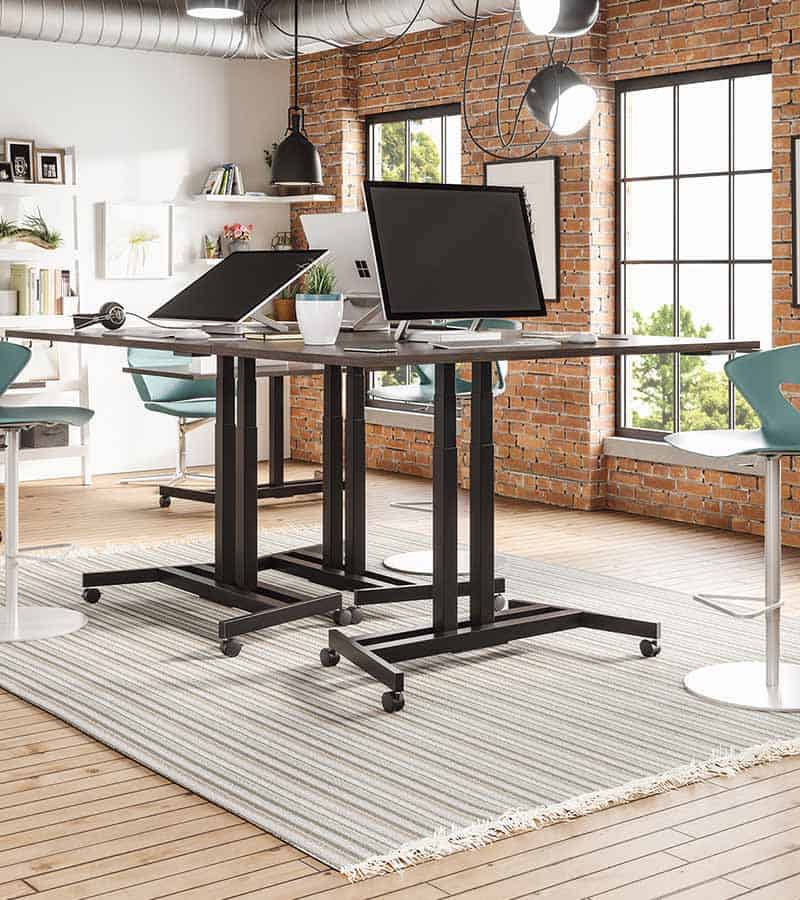
A pneumatic desk lasts 30+ years. How? Fewer components & Swiss steel
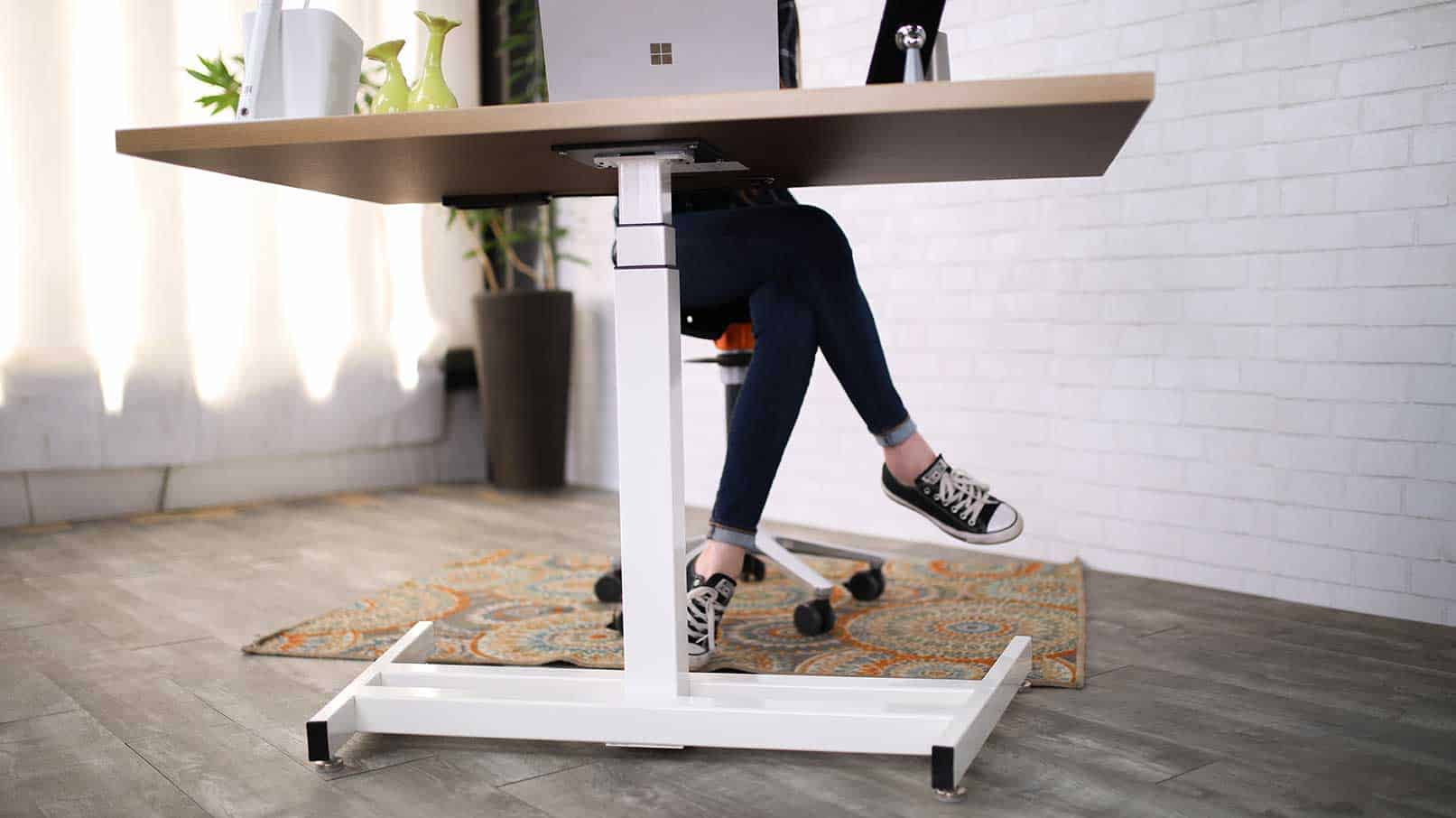
Why Swiss steel? Swiss metallurgists are the only ‘metal scientists’ in the world that make steel at the high tolerance required for commercial use — a tolerance that gives Lüften and Ändern some of the longest lifespans in the industry.
Pneumatic stand-up desks also last longer than electrics because they are simpler mechanisms, with fewer components.
- German-designed; made to last
- Commercial-grade Swiss steel
- Fewer components = less liable to break down
A pneumatic desk is power free; no vampire draw sucking electricity 24/7

While there are electric adjustable standing desks that are designed to operate more energy-efficiently, why not get a desk that uses up no energy at all? This is where pneumatics blows electrics out of the water: it’s a system powered by air — and air is, of course, a free, infinite resource.
Just imagine a pneumatic’s smooth and quiet lift as a pleasant reminder that you aren’t using up more of the earth’s resources every time you ‘operate’ your adjustable desk.
Made of nearly 100% recyclable materials, a pneumatic doesn’t leave behind E-waste or pollutants at the end its 30+ year life
And at the end of its long life, a pneumatic leaves behind significantly less waste than an electric. In fact, nearly 100% of the materials on our Lüften and Ändern desks are recyclable.
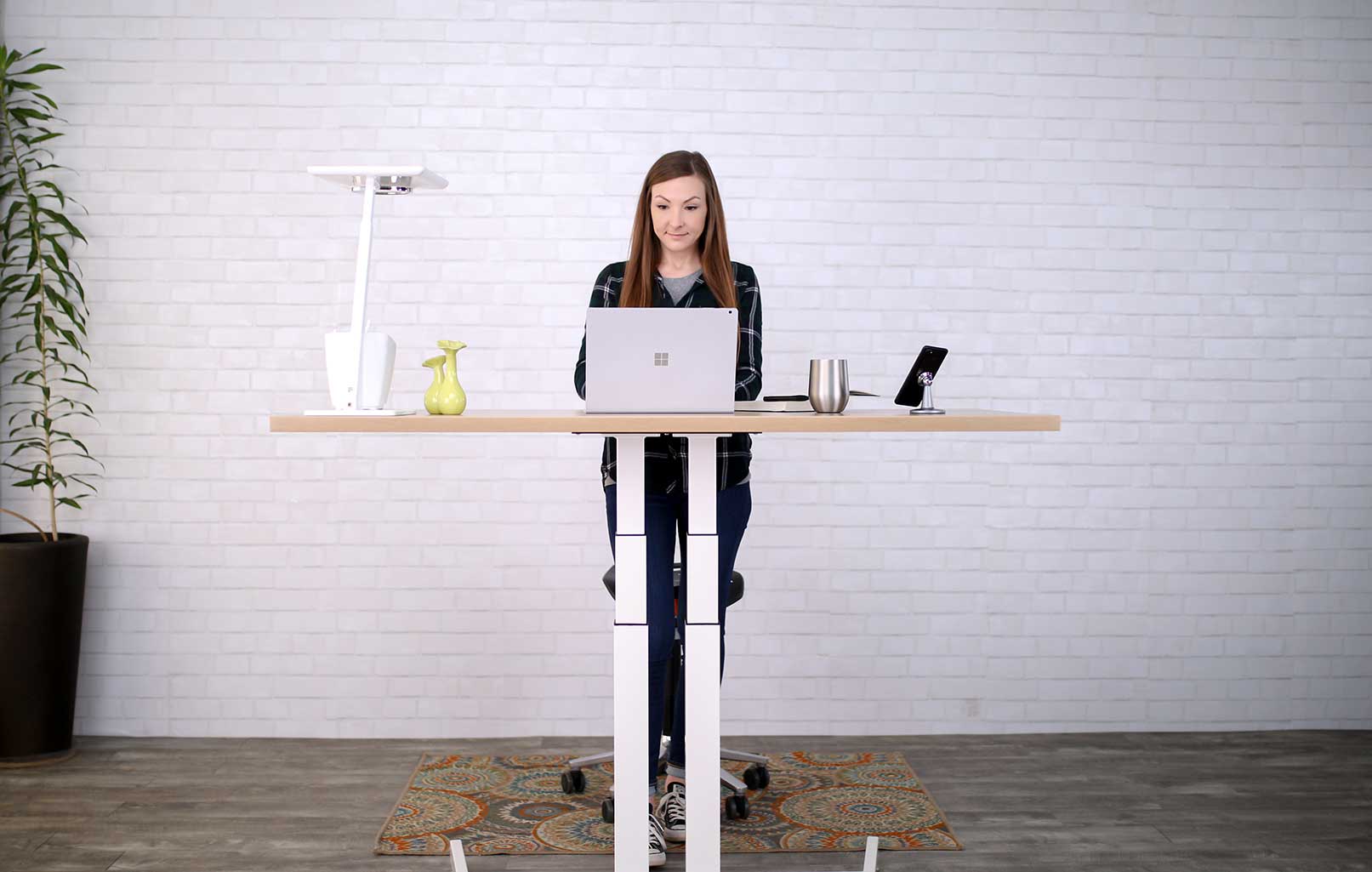
And pneumatics are a non-complex system, so there are fewer components on it that need to be disposed of and recycled in the first place. Pneumatic desks also don’t leak E-waste or pollutants, because they have no electric motor.
In short, the Germans got it right: minimal is the way
European furniture makers have been perfecting their craft for hundreds of years. If unfamiliar, the ethic of traditionally German design is minimalism — reducing the design to its essence. Minimal design is good for the environment because less material equals less waste across a product’s entire life cycle.

- Reduced to the essential = less waste across the entire product lifecycle
- Minimally designed; classic through time
- Customize your base and tabletop colors for an aesthetic you’ll enjoy for 30+ years
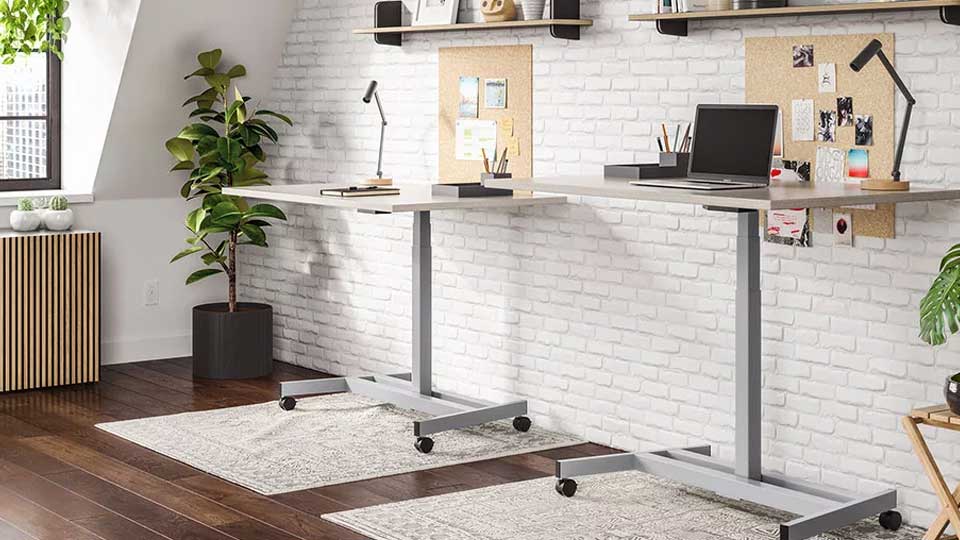
It also makes a damn good-looking desk. Both the Lüften and Ändern embody minimalism. The desks are built without the typical crisscrossed supporting beams you see on most pneumatic desks — beams that obstruct movement and the use of a footstool, in addition to introducing extra material. Their minimal, reduced design stays classic through time, serving as a simple foundation for your workflow year in and year out.
You can also customize your Lüften or Ändern’s base and tabletop color to create the preferred aesthetic that you’ll enjoy through the years.
→ A pneumatic desk is also quieter and 8X faster at transitioning than an electric. And because a pneumatic requires no extra cord, you can take it wherever your work flourishes — you won’t be limited by outlets if ever you want to ‘relocate.’
3 tips on picking a pneumatic desk manufacturer that is doing their part to protect the environment
If you want to make the best choice for the environment…
1. Find a team whose manufacturing plant meets stringent pollution standards
The steel plating factory that makes the legs for our Lüften and Ändern desks achieves ISO 14000 standards for meeting a high level of air pollution regulations.
2. Look into the sustainability of the desk’s raw materials
Our Lüften and Ändern’s tabletops are Formica-surfaced particleboards. The Formica is GreenGuard certified (+), so the product meets rigorous chemical emission standards. And our particleboard is a composite engineered wood product made from wood chips, plant fibers, and other materials — sustainable choices. And in some cases, you can actually keep your current tabletop and just install the legs rather than throw your entire desk away.
3. Don’t forget the (environmental) cost of shipping
Purchasing American-made products is a bonafide way to reduce the carbon footprint of your purchase.



